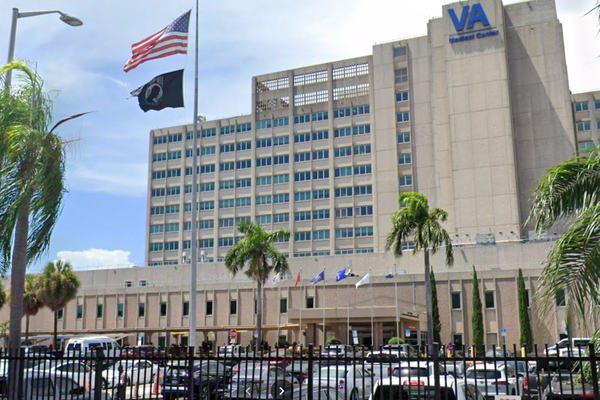
Conversations about stocks usually start with the large-capitalization category and sometimes include small caps. But midcap stocks often get ignored.
That creates opportunities for money managers such as Hunter Doble, co-manager of Hotchkis & Wiley’s Mid-Cap Value Fund (HWMAX).
Midcap combines the best of small-cap and large-cap equities, he says. Midcaps are off the beaten path, yet financial reporting and governance for them are often strong.
The midcap value sector now trades at a larger discount to midcap growth than usual, Doble says. And the fund at Los Angeles-based Hotchkis & Wiley trades at a big discount to the midcap value sector itself.
Financial and energy stocks are among the fund managers’ favorites. The energy sector has room for growth, and strong regional banks are unfairly being pulled down by the industry’s turmoil, Doble said.
His fund generated annualized returns of negative 9.7% for the past year through March 28, positive 38.09% for the past three years, 5.44% for the past five years and 6.81% for the last 10 years, according to Morningstar.
Here are some of Doble’s thoughts and stock picks.
TheStreet.com: What’s your investment philosophy?
Doble: We look at solid businesses trading at discounts to their long-term earnings power.
Short-term stock prices can deviate from long-term earnings power because people tend to extrapolate current conditions to the future.
There’s an overreaction to [negative] short-term results, which have limited impact on long-term earnings power. Stock prices can reflect volatility more than intrinsic value. Sometimes a company’s financial strength allows it to overcome challenges.
The range of market caps that we will consider for the fund is based on the most recent Russell Mid-Cap Index reconstitution. Currently that is a range of $3 billion to $40 billion. The median market cap in the fund is $6.7 billion.
TheStreet.com: What are the attractions of midcap stocks?
Doble: Midcap brings the best qualities of small- and large-cap. Like small-cap, the names are more off the radar. But a lot of midcap companies have liquidity and financial strength. They have more robust financial reporting and governance [than small-cap companies]. That makes midcap an interesting place to invest.

Hotchkis & Wiley
TheStreet.com: What’s the outlook for midcap value now?
Doble: The Russell Midcap Value Index is trading at a much wider discount to the Russell Midcap Growth Index compared to the last 20 years. And our portfolio trades at a wide discount to the Value Index.
The Growth Index has a price-earnings ratio of 24, compared to 14 for the Value Index and 6 to 7 for our portfolio. Even within the value part of the market, our stocks are really out of favor.
The defensive part of the market, such as utilities, is holding up well. [But that’s not our focus].
TheStreet.com: What industries do you find attractive now?
Doble: We’re overweight in financial and energy stocks. People are afraid of the economy’s path, so those stocks are trading at a discount. Both industries are economically cyclical, but they have earnings power.
The energy industry isn’t investing enough capital in the business. Exxon (XOM) and Chevron (CVX) are spending 20% to 30% below what they spent in 2013. And we think a tightening in supply-demand is coming.
As for financials, regional banks are particularly attractive now. The two recent failures – Silicon Valley Bank and Signature Bank -- created significant anxiety.
They brought attention to the risk of highly concentrated deposits and interest-rate risk. We don’t dismiss the risks. But if you’re selective, you can find names that don’t have highly-concentrated deposits and interest-rate risk.
Can you talk about three of your favorite stocks?
1. Kosmos Energy (KOS). It’s an oil and gas producer that currently generates about $1.25 per share in free cash flow. It’s developing a liquefied natural gas facility that will start production later this year. We estimate that project to be worth $4 a share. Applying a 10x multiple to the current free cash flow and adding the $4 would give a $16.50-per-share value to KOS. It currently trades around $7.
2. Citizens Financial (CFG), a bank. The stock is down about 20% year to date. There’s a lot of anxiety about unrealized losses on securities and highly concentrated deposits, as I mentioned above. And Citizens is painted with the same brush as more troubled banks. But it has a well-diversified deposit base, and the business has consistently grown.
3. First Citizens BancShares (FCNCA), another bank. It has agreed to buy assets of failed Silicon Valley Bank for a very large discount -- $16.5 billion. First Citizens has executed purchases [of failed banks] from the (Federal Deposit Insurance Corp.) for decades. That can be very lucrative. With the SVB purchase, First Citizens has doubled its tangible book value and increased its earning power.
Action Alerts PLUS offers expert portfolio guidance to help you make informed investing decisions. Sign up now.







